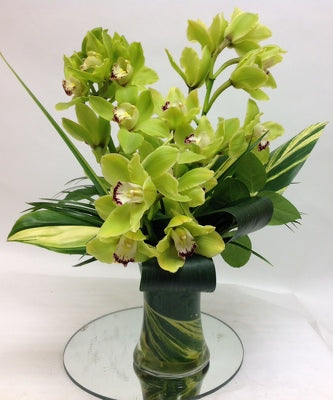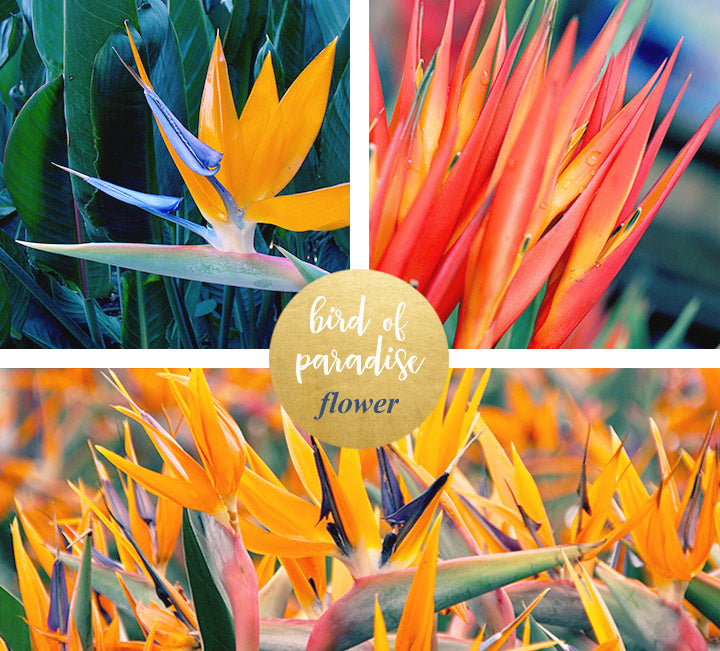How to take care of your Orchids (or for Orchid Delivery ! )

Orchids
Proven methods for how to take care of orchids in the long haul might be easier than you’ve been led to believe. You’ve read all the guides, tried all the tricks. If your orchids are struggling to find their blooming happy place, this may be the help you need.
Before you start building a greenhouse in your living room, we’ve put together suggestions from farmers and experts who have spent years growing orchids to not only keep your tropical blooms alive, but to help them thrive. If you’ve been looking for flower guidance that isn’t adding ingredients that sound like a recipe for flower ice cream (also, yum), this quick answer guide may help you turn over a new leaf.
An Overview of How to Care for Orchids
Caring for orchids may not be as “cut and dry” as we believe, here’s what they need to keep blooming brilliantly:
Water your orchid when the roots are visibly dry
Soak the roots with room temperature water until they appear saturated and green
Drain your orchid as thoroughly as possible
Have patience with re-flowering, orchids may take up to 9 months before they bloom again
Make sure they get plenty of indirect sunlight, close enough to a window to generate food, but not where they’ll get cooked by the sun
Spray the air, not the plant. If you feel your orchid benefits from humid air, moisten its environment rather than the plant itself. They pull the moisture from the air, soaking it may not accomplish what you hope.
You get a ton of advice when you mention your orchid isn’t doing well. The ice cube, adding cinnamon for fungus, over-watering, over-pruning, too much sun exposure, they’re all easy answers and often easy mistakes we make caring for orchids. The fundamentals for taking care of an orchid come down to three things: efficient watering, good drainage, and temperate environment.
Best Lighting for Orchids
Taking care of orchids is about finding a balance between feeding them the right amount of nutrients and our tendency as humans to over-care for them like they’re our children (for some of us they are). Like succulent care, we have a tendency to think orchids need more water, more sun, more of what we’ve been told is part of a flourishing plant lifestyle. But not all plants and flowers need the same intensity or exposure to the outdoor elements.
Of course, they can adapt over time to conditions when they’re permanently planted in the ground, but a wide range of orchid species grow naturally on the rough bark of tropical trees. They nestle in the craggy areas between branches and bark. Essentially, they get enough sunlight to create plant food, but are still mostly shaded beneath the canopy of branches and foliage from their host tree. It’s why orchids need plenty of indirect sun to bloom and flourish.
Indirect sunlight doesn’t mean limited time, some tropical orchids may need up to 12 hours of sun a day, which is tough in cooler climates with minimal sunlight. UV lamps from the hardware store might seem like an easy solution, but since orchids aren’t happy in direct sunlight. An indoor UV lamp that emits similar rays might be too intense for orchids. Being dried out by beams of blazing sunlight is a concern, it’s best to keep them near a sunny window beyond the reach of direct sun exposure.
How to Water Orchids
Orchids are often sent as gifts and arrive in a pot with soil or other potting material. Plant and flower delivery vases or pots aren’t usually designed to have drainage, they’re made for display. This is why The Bouqs Co. sends a lot of our plants and orchids for delivery inside of ECOPOTS. Not only are they made from durable recycled materials, they have redesigned how pots for plants function. While plenty of plant enthusiasts aren’t excited about having a drain dish on the bottom of their plant, ECOPOTS have a built in drain plug that’s camouflaged from the outside.
Think of that old ice chest you drag out for big outdoor social events. When all the ice melts and all the drinks are gone, you just open the plug and let the liquid drain and dry out. Ecopots are designed similarly with a drain plug in the bottom, another reason we love them especially for orchid delivery. For years people have been telling us orchids were tropical plants that needed plenty of water, yet they tend to thrive in soil with low moisture retention. Ensuring that they have proper drainage and a chance to dry out is crucial to preventing root rot.
Root rot prevents your orchid from taking in the nutrients it needs to survive. If you feel that your orchid needs to be re-potted, it’s best to choose a soil that is fast draining to keep the root system from being exposed to fungus and other rot. Without a foolproof way to prevent root rot, we got suggestions from the experts:
Try not to over-water your orchid
Make sure both the plant and the pot drain effectively (if your pot doesn’t drain, pour out the excess water once it has completely finished draining from the soil or potting material)
Keep a regular feeding schedule, plants are adaptable, but drastic changes in their watering or environment can sometimes cause shock and force them to become dormant. While many plants are able to adjust to their changing environment, sudden dips in temperature, sunlight or irregular feeding schedules can sometimes throw off their inner clock. Thinking of orchids as a pet which requires a bit of care to remain healthy and happy will give you a framework for how to care for orchids.
If you feel misting with a spray bottle helps, use room temperature water to humidify the air around your orchid, it’s best not to spritz it directly.
You can try a humidifier to create a more ideal climate for your flower to draw its nutrients, but if you’ve already found rot in your orchid, more moisture is probably not the answer.
Since many potted orchids arrive in nursery containers along with their pot, it’s easy to remove them and either sit them near a fan or somewhere dry. This may help remove excess moisture from the roots. If you believe your orchid is being affected by rotting roots you can try to remove it carefully, though this may increase your orchid’s unease and cause it to go into survival mode.
Majority of orchids are epiphytes, which are a kind of air plant that take in its moisture from arid or humid climates and grows naturally on trees in tropical climates. In fact, a 2016 study measuring plant populations showed that this variety of orchids made up the majority of this species in humid tropical climates. The air plant varietals of orchids are the ones that horticulturists recommend misting. Terrestrial varieties of orchid on the other hand, take their nutrients from their roots and grow in soil. If someone sent you an orchid delivery, it’s likely the terrestrial variety. Though they’re meant to be rooted in soil, many are potted in rock or mulch to ensure they have proper drainage.
It’s a Jungle in There – Best Temperature for Growing Orchids
While they aren’t strictly tropical, orchids prefer the temperature to be on the warmer side. Ideally, keeping their environment around 60 to 75 degrees Fahrenheit would be best. If you’re already keeping your thermostat in “vacation range” for your furry pet pals, it may be perfect for your orchid to cozy up to.
It’s worth mentioning that orchid experts recommend having consistent air movement in their environment at all times. They specify that this can be accomplished with a fan as long as the air direction isn’t aimed directly at the orchid. Find the balance between a pleasantly breezy day and an indoor wind advisory.
Orchid Care Troubleshooting Tips
If your orchid seems healthy, but isn’t re-blooming, it may either be getting too much light or not enough. We assume healthy plants should have a dark green coloration, though thriving orchids usually have a grassy lighter green hue overall. Dark green roots may suggest that an orchid isn’t getting enough light.
You may be tempted to give your orchids space. You may assume these tropical beauties are tough because of their rugged stalks, but remember their flowers are delicate and learning how to care for your orchids is just as subtle of a balance. There are 20,000 types of orchids and each has their own preferences for what helps them bloom regularly. To receive and enjoy fresh flowers including orchids on a schedule, a subscription will ensure that you have a beautiful bouquet nearby to remind you that taking care of your orchid is worth the benefit of continuously blooming flowers.
How Long Do Orchids Live?
While there are claims that orchids can live up to 100 years, their typical life span for blooming is 15-20 years. That said, when you’ve had your orchid for some time and it begins to grow beyond the plant’s original pot, it’s time to find it a bigger home and re-pot your orchid.
Post Bloom Aftercare For Orchids
Once your orchid has bloomed and shed its former flowers, there’s no need to feel discouraged. Healthy orchids aren’t constantly in bloom, expect them to flower again in 6-9 months as long as they’re kept on the same feeding routine of sunlight, temperature and water. Consistency is the key to caring for orchids, humans may enjoy variety and changes to routine, but an orchid can’t stand up and run to the grocery store for food or water when they need it.
If a plant isn’t sure of its nutrient source, it can go dormant, reserving its vitamins for an unforeseen future. Giving your plant a regular routine of sustenance will give it a chance to comfortably adjust to its environment and bloom on a consistent schedule. This will encourage your orchid to use its nutrients toward blooming again and providing you with a cascade of beautiful, fragrant flowers you love.
The symbolism and meaning of orchids goes back to ancient times and continues to be a reminder to those close to us that we’re thinking of them warmly. Between the moments we get to spend together, the orchid plant grows and its blooming flowers are a delightful surprise. Sending orchids for delivery is a meaningful gift to show you care, they just need a little love to keep them healthy, happy and blossoming.




